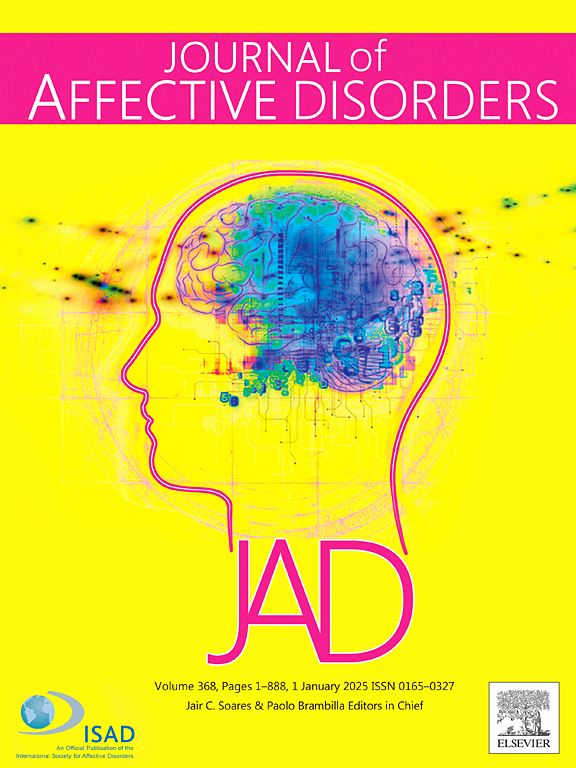Psychophysiological stress response, emotion dysregulation and sleep parameters as predictors of psychopathology in adolescents and young adults
IF 4.9
2区 医学
Q1 CLINICAL NEUROLOGY
引用次数: 0
Abstract
Background
Increased emotional reactivity to stress, emotional dysregulation and sleep disturbances are interdependent trans-diagnostic processes that are present in internalising disorders such as depression and anxiety disorders. This study investigated which objective and subjective parameters of stress reactivity, sleep and emotional processing would predict symptoms of anxiety and depression in adolescents and young adults.
Methods
Participants were adolescents and young adults between the ages of 14 to 21 (N = 106, 25[24 %] male, M age = 17.93). Heart rate, heart rate variability, and subjective stress levels were measured before, during and after a stress induction using the Trier Social Stress Test (TSST). Questionnaires on internalising symptoms, emotion dysregulation, and sleep quality were used. For seven consecutive nights, objective sleep parameters were measured with a wearable device.
Results
Heart rate and heart rate variability after (but not during) the stress induction and emotion dysregulation predicted depressive and anxiety symptoms. Lower subjective sleep quality (but not the objective sleep parameters) was associated with depressive and anxiety symptoms. Emotion dysregulation mediated the relationship between sleep quality and depressive symptoms.
Limitations
A cross-sectional design, no measurement of daily activity or naps, and only self-report measures of depressive and anxiety symptoms as well as emotion dysregulation.
Conclusion
The findings of elevated cardiovascular activation after – but not during – the stress induction and emotion dysregulation underlines problems in regulating and recovering from stress as predictors of youth internalising psychopathology. Differences between subjective and objective measures of sleep and stress reactivity suggests a role of cognitive biases in these domains.

求助全文
约1分钟内获得全文
求助全文
来源期刊

Journal of affective disorders
医学-精神病学
CiteScore
10.90
自引率
6.10%
发文量
1319
审稿时长
9.3 weeks
期刊介绍:
The Journal of Affective Disorders publishes papers concerned with affective disorders in the widest sense: depression, mania, mood spectrum, emotions and personality, anxiety and stress. It is interdisciplinary and aims to bring together different approaches for a diverse readership. Top quality papers will be accepted dealing with any aspect of affective disorders, including neuroimaging, cognitive neurosciences, genetics, molecular biology, experimental and clinical neurosciences, pharmacology, neuroimmunoendocrinology, intervention and treatment trials.
 求助内容:
求助内容: 应助结果提醒方式:
应助结果提醒方式:


